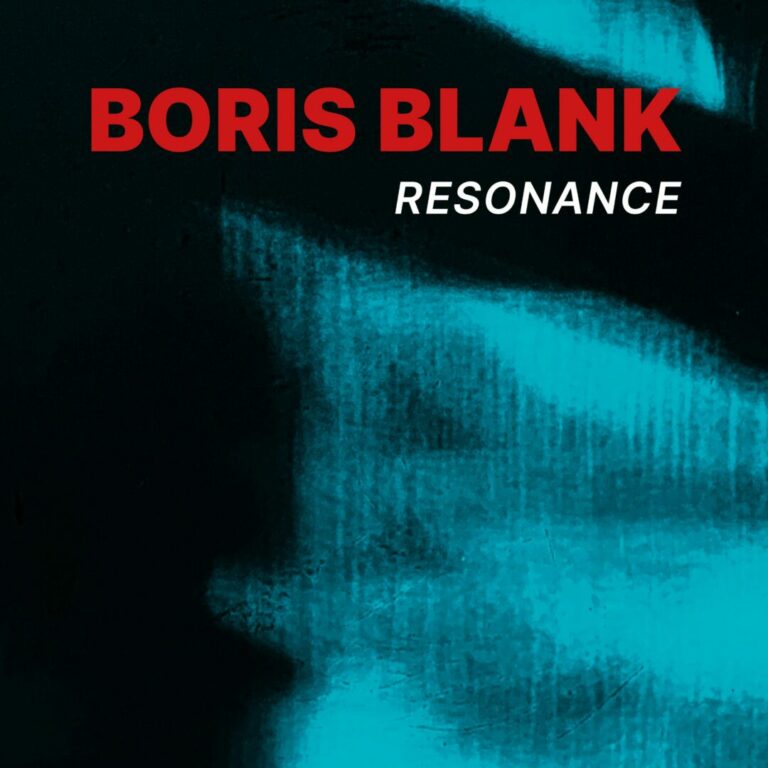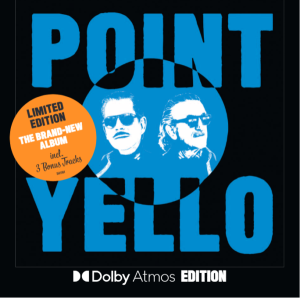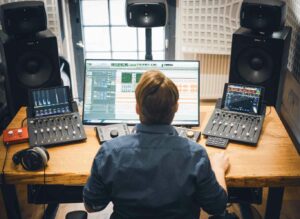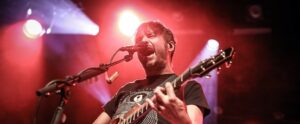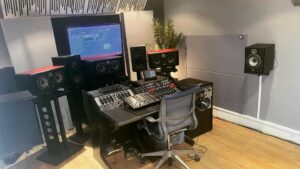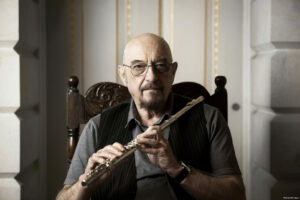
Yello composer Boris Blank sat down with us for an interview on the release of his solo album “Resonance”. Here he talks about the challenging balancing act between his own identity in music and the commissioned work for “Resonance”, the inspiration provided by the thermal baths, what it was like to hear his own music in 3D and where the musical journey will take him in the future… The interview was conducted by Christoph Diekmann.
Boris, your new album “Resonance” will be released on February 16. What was it like for you not to conceptualize a Yello album musically this time?
In this case, the musical theme was completely different. The idea here was to create something chilled out and meditative, as I originally created the music for the wellness area of a thermal spa, where people want to relax.
But apart from that, the situation is actually the same as it has been for the last 45 years: As with Yello, I make the music. Of course the music on “Resonance” is different from what we do with Yello, because it’s an instrumental record. With Yello, the music comes from me and when it’s finished, I show it to Dieter, who then invents a character to go with it and then walks through these worlds of sound as the protagonist.
So what was special about the creation of “Resonance”?
For me, “Resonance” was almost like walking a tightrope. As I said, the music was intended for a completely darkened thermal bath – with a firmament consisting of LEDs, a reclining island with a huge projection screen on the ceiling and two floors of winter garden. It was clear then that I didn’t want to be pushed into a “cheesy” corner or in an esoteric direction and incorporate any panpipes and harps. Rather, I wanted to create a certain dramaturgy in each piece and create a kind of journey that people are drawn into.
But of course not in such a way that the defibrillators on the walls are used: The whole thing is more or less leisurely, there are two or three uptempo numbers, according to the themes I was given as a brief. These are facets that belong in the broadest sense to the microcosm of water in all its aggregate states.
There were topics and facets that were specified by the FORTYSEVEN company. In the broadest sense, these were themes such as “Rock Bottom”, i.e. the rock, the material of the earth, or “Cosmos”. Another was “Gravity”, the dissolution of gravity, floating. I stuck to these themes as much as possible and tried to accommodate them musically without losing my DNA.
And Mario Botta, the architect, was another important reason for me to be involved in the project, because he is a very respected architect. I was even allowed to watch the archaeologists excavating when the thermal baths were still under construction. There I could see how the original springs were still surrounded by Roman walls – from more than 2000 years ago.
Did inspiration come from this building and the history of its creation? Were you on site during the construction process and did you change pieces again on this basis until the final composition and recording were ready?
Absolutely. I was also in close contact with the team that produced the films that are projected onto the ceiling in the rooms. There were always meetings. If I may say so, they even adapted more to my music, because it was easier to cut the images according to these rhythms than the other way around.
They wanted to do this very modestly in stereo. And I said: “If it is to be an experience, then it absolutely has to be immersive.” They had to change the wall paneling to be able to place additional speakers – and lots of them.
Stefan Bock and Stefan Zaradic then used their SpatialSound Wave tool to control these three-dimensionally and were then able to address them and send sounds to different loudspeakers so that the entire room is ultimately flooded with sound. The immersive design of the soundscape was a very important decision – and unfortunately cost the operators a bit of money.
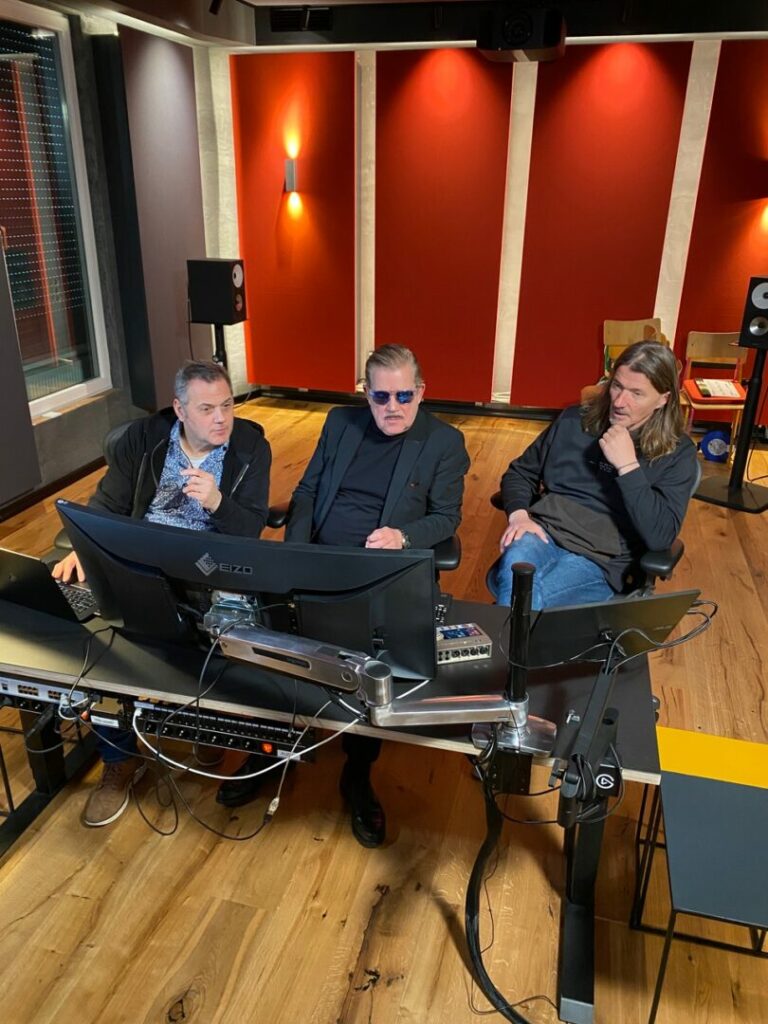
This wasn’t your first collaboration with Stefan Bock and Stefan Zaradic. They mixed the Yello album “Point” in Munich. Resonance” was also finalized for Blu-ray at Stefan Bock’s studio, and they were also jointly responsible for the installation and sound on location. How did this collaboration take shape?
For me, of course, it was an event, because I have always – as Stefan and Stefan tell me – made two-dimensional music that fits into a three-dimensional, immersive world. I want listeners to feel their way into the soundscape, into my sound world, and to be able to walk through it and look around.
And that’s exactly how the two of them felt. I sent them a reference in stereo – that was their template – with the static always concentrated where it needed to be, and then they started designing. I already had confidence in their work through “Point”. I was totally taken with the mix.
I also think that this 3D mixing is a separate department that I don’t want to get into because it’s very complex – you have to be able to do it. 3D mixing is not everyone’s cup of tea, but these two are very good at it and have years of experience. And then I’m surprised when I go to Munich, or when they come to the Zurich University of the Arts, where they have a wonderful little studio that is very well equipped, including Dolby Atmos. This opens up completely new horizons for me, as I then hear my own music with new ears.
Apart from a few small adjustments that they still make for me, I’m usually over the moon with the sound. For me, it’s like when I was a little boy listening to the Rolling Stones in mono – and then suddenly there was stereo and the drums came from the left and the guitar from the right. Now it’s the way it was always meant to be – namely that music sounds three-dimensional, just as we hear life on the street, for example.
Are you so infected by Dolby Atmos that you already have a 3D idea of the sound when composing?
No, not at all. That’s what they say about Yello’s music: it has always been predestined to place the sounds and tracks differently in space. When my daughter was still in kindergarten or later went to school, mothers or fathers came to me at parents’ evenings and said: “I really like Yello, but I can’t listen to it anymore, my boy listens to your music all day long.” There is something playful about it that lets the listener look into the sound and discover more and more things. And that’s why I believe that our music is very well suited to 3D sound.
I am convinced of that. I always like to showcase your record at our screenings – we do a roadshow, Visions of Sound, where we invite retailers to 25 cities every year to introduce this immersive experience to consumers who may not know about it yet. And Yello is always on the playlist.
Great! Have you heard “Resonance” in 3D yet?
Unfortunately, I haven’t been able to hear it yet.
It is an experience. There’s a piece you have to remember called “Time Bridges”. You know when you get goosebumps from head to toe. The piece is like moving in a magnetic field. You can almost touch the contours of the magnetic fields, it’s incredible. There’s something magical about it, time really does stand still from time to time. Because of the convergence, when this monotonous bass line repeats itself over and over again – and suddenly you’re in something that totally sweeps you away physically.
Would you like to describe two or three other scenes from the album? What can we expect?
It’s about spaces that have always been important to me, hence the album title “Resonance”. There is a very large space, namely outer space, to which I refer. The brine bath has the graceful mood of a firmament, so my thought was to make a 15-20 minute piece with a climax in the middle, the essence so to speak. People go in and out every fifteen minutes, and the aim was for as many people as possible to experience it. This is the title track “Resonance” on the album.
Then came a request from a post-production company in London that does special effects for Batman and James Bond, among others. Last summer, they were commissioned by NASA to create a three-minute trailer with NASA footage. This company then asked me in turn to provide a piece of music. I then reworked these three minutes from the brine bath scene a bit and sent them to a Dolby Atmos studio in London for mixing. The Swiss Thomas Zurbuchen was NASA’s top development chief at the time; he carried the billion-euro budget on his shoulders and made this project possible. I was in contact with him, sent him the piece and he replied very nicely that he liked it and was looking forward to the video. Unfortunately, the company had too many orders to complete and ultimately scuppered the project.
But because I wanted to see what it might have looked like, I bought a few libraries from NASA and downloaded space footage from NASA satellites. I cut a video from it myself, which I would not play to NASA, of course, because I think it’s too simple for that.
I actually produced a total of five videos for the album because I discovered the world of images for myself. Together with music, this is actually obvious. Editing and rhythm are extremely close together.
For example, I created a video for “Vertigo Heroes”: It reminds me a bit of Fritz Lang and Metropolis with its cogwheels. I proceeded in a similar way to my music. I always start with an idea, let’s say a cogwheel, and then I add something else, and then something else, like with my sounds. And suddenly an outline emerges that shows me where the journey is going – and it’s the same with the pictures.
Dieter describes you as a painter with your music. To paint these sound galaxies, how high is the audiovisual part of “Resonance?” Are there graphic and video installations for each track in the thermal bath?
There are individual pieces for six facets that are projected onto the ceiling. A long piece runs in the saltwater pool, as well as in the winter pool, which really is a journey around the planet and across the steppes. And when you lie there in this winter garden with plants and butterflies, the music should also accompany this atmosphere.
If you were to look back on the history of its creation and describe this journey to the finished work in fast motion, what were the challenges and critical moments during production?
That is difficult to say. As I mentioned at the beginning, it was a balancing act not to slip too far into kitsch: It’s allowed to be a little sweet in certain pieces, but under no circumstances should esoteric associations be evoked. I think there’s a certain amount of experience from the last 45 years that I can just do my thing and not bend. I have to enjoy it, and in this case I did.
The exchange was something I’m not used to. Otherwise I’m always alone in the studio like a hermit. Sharing myself and my process in this case with people who then adapt their movie to it and ask for certain scenes, that was new. But there was never a clash or anything unpleasant. There was no tension at all. The dialog was simply unusual for me, as I usually work in total isolation from the outside world.
I am very excited. In the info text we received, it’s nicely worded that you’ve left the planet and we’re surfing in spacey orbit. I’m really looking forward to this surf wave.
I say, take it easy and don’t expect the pop songs you’re used to from Yello. If you have a tendency towards melancholy or meditation and relaxation to music, I think you might like it.
The DNA, the recognition in the pieces, the “Blank” thing can somehow be experienced in the music, I was told. You can hear it after three bars: This is Yello – or Boris Blank.
Thank you very much for this information! Is there anything you’re currently working on that you can tell us about? A new project perhaps?
The journey will certainly take us back to the main road – to Yello, of course. I recently went through my old Mac Pro looking for artifacts and I’ve been storing some ideas there since 1997 because, as I said, I work like a painter. He has a few pictures in his studio that he has put away in the corner.
There are so many things: 70-80 tracks that were started and never finished. Also in the last two years – just recently I composed a piece that will also be included in the selection for a new vernissage by Yello.
Great, we’re already looking forward to it! Thank you very much for your time for the interview.
Oh, I’d love to.

